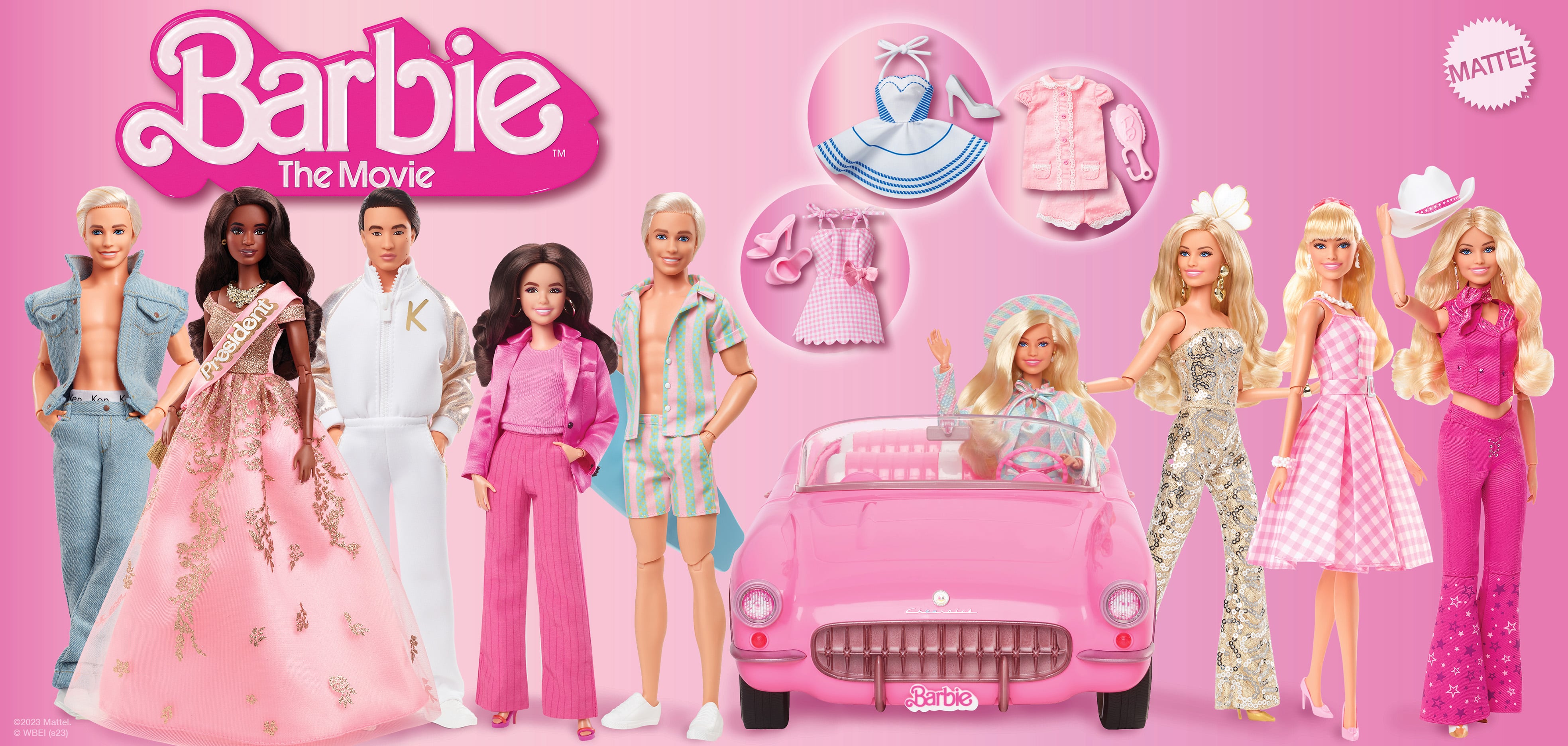Barbie has had more than 250 careers since 1959, but her biggest role might be just days away.
The highly anticipated summer blockbuster “Barbie” the movie comes to theaters on July 21, in which Margot Robbie and Ryan Gosling will star as the titular Barbie and ever-present Ken.
Barbie started off as a blonde-haired, blue-eyed modelesque children’s doll. Six decades later, the 11.5-inch tall phenomenon has become a global empire. According to Barbie Media, the Barbie “brand has over 99% brand awareness globally.”
So what is Barbie’s secret sauce?
According to researchers at the Fox School of Business, it is Barbie’s ability to adapt to the times. Barbie has managed a careful balance of clinging onto nostalgia while creating representation that reflects our world today, and what we can aspire to tomorrow.
Since Mattel manufactured the first Barbie in 1959, the doll has constantly changed her look, profession, hair type and more to reflect the current aspirations of women.
Crystal Reeck, assistant professor of marketing at the Fox School, specializes in consumer behavior and decision making. She believes that Barbie has been successful in its longevity because of a marketing technique called imaginative play.
“Imaginative play helps children set up visions of what they could be, or visions of what would happen and what they could do. This is a crucial learning exercise for children who are developing their sense of self,” Reeck says.
“Imaginative play is a core part of how kids play with a Barbe, by creating this world in your mind of what's happening. And it lets you make sense of past memories,” Reeck adds.
Today, this single franchise is one of the most recognizable names in history, and around the world.
Yet, Barbie was not always seen as a positive role model for young girls and women. Critics say the doll was responsible for setting unrealistic beauty standards in women, and a lack of representation was a concern for many consumers.
Mattel actively addressed public concerns and now listens to feedback, leading to efforts to improve the product and its impact.
“[Mattel] has been very agile and very adaptive,” says Dennis A. Paris, assistant professor of marketing at the Fox School. “They've listened very closely to the sentiment around the brand and not just understood what the negatives were, but acted on it.
“Their primary reason for their endurance over years…is not ignoring the negatives, but embracing it through the multiplier effect.”
The multiplier effect is another marketing tool that Mattel uses. The brand is not just about one thing, but a combination of spin-offs which create a world around the brand.
“Barbie is not all about Barbie; it could be about Ken, and then the younger sister, Skipper, was introduced, and Kristy shortly after was introduced as the first Black Barbie character,” Paris says. “They created storylines around these supporting characters which resonated with a wider audience and increased global awareness.”
Paris believes that the reason for this is that Mattel made the Barbie brand relatable to everyone through representation and adapting to global culture. This has gone a long way to increase its longevity.
“Mattel continues to invest and keep its Barbie brand relevant by researching consumer sentiment and insights on cultural trends globally,” Paris says.
On Mattel’s website, there is a section called “Barbie Role Models” based on women across the globe who are achieving success, along with their matching Barbie dolls available to purchase.
Barbies not only come in all different shapes and sizes, but their prices also vary based on a variety of factors. Just the doll alone ranges from as low as $5 to as much as $100.
Michael Leeds, professor of economics at Temple University, states that this is an example of price discrimination, the action of charging people who can pay more or willing to pay more a higher price to increase profits. According to Leeds, this is another huge factor in why the brand is so globally recognized.
“Barbies are a classic example of price discrimination. Because the basic Barbie is relatively cheap, but if you watch the commercials for Barbie, there's a little message at the bottom of the screen at the end of every commercial that ‘accessories not included.’ And it is those accessories that can make it expensive,” Leeds says.
This tactic ensures that those of all socio-economic backgrounds would take an interest in Barbie, increasing its global audience—allowing Barbie to both be accessible to anyone but still a lucrative suite of products.
Whether or not Barbie will find the silver screen to be a lucrative venture remains to be seen. But if the revenue predictions of $93 million are correct, Barbie could be adding an addition to her Malibu DreamHouse very soon.

